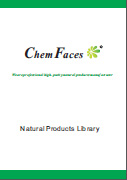| Description: |
Higenamine (HG) is a well-known selective activator of beta2-adrenergic receptor (β2-AR) with a positive inotropic effect. HG exerts an antispasmodic effect on cold-induced vasoconstriction by regulating the PI3K/Akt, ROS/α2C-AR and PTK9 pathways independently of the AMPK/eNOS/NO axis, it reduces HMGB1 during hypoxia-induced brain injury by induction of heme oxygenase-1 through PI3K/Akt/Nrf-2 signal pathways. HG enhances the antitumor effects of cucurbitacin B in breast cancer by inhibiting the interaction of AKT and CDK2. It attenuated LPS-induced depression-like behavior by regulating BDNF-mediated ER stress and autophagy.
|
| Targets: |
beta2-adrenergic receptor | PI3K | Akt | ROS | PTK9 | AMPK | HMGB1 | Nrf-2 | CDK | BDNF |
| In vitro: |
| Exp Ther Med. 2019 Aug;18(2):1299-1308. | | Higenamine exerts an antispasmodic effect on cold-induced vasoconstriction by regulating the PI3K/Akt, ROS/α2C-AR and PTK9 pathways independently of the AMPK/eNOS/NO axis.[Pubmed: 31316621 ] | The present study aimed to investigate the antispasmodic effect of higenamine on cold-induced cutaneous vasoconstriction and the underlying molecular mechanisms. A cold-induced cutaneous vasoconstriction rat model was established and different doses of higenamine were delivered by intravenous injection. The changes of cutaneous regional blood flow (RBF) between groups were analyzed.
METHODS AND RESULTS:
In vitro, the proliferation of human dermal microvascular endothelial cells was measured by MTT. The NO concentration was detected by a nitrate reductase assay. Flow cytometry was applied to measure reactive oxygen species (ROS) levels. The protein expression levels were detected by western blotting. The results demonstrated that in the model group, RBF declined compared with the normal control group, but was reversed by treatment with higenamine. The expression of endothelial nitric oxide synthase (eNOS), phosphorylated (p)-eNOS, protein kinase B (Akt1), p-Akt1, AMP-activated protein kinase (AMPK) α1 and p-AMPKα1 was upregulated by hypothermic treatment but was reversed by higenamine treatment. Treatment with higenamine significantly reduced the level of intracellular α2C-adrenoreceptor (AR) compared with the hypothermia group (P<0.05). Furthermore, the expression of twinfilin-1 (PTK9) was downregulated in the higenamine and positive control groups compared with the hypothermia group (P<0.05). Compared with the hypothermia group, the levels of ROS and α2C-AR (intracellular & membrane) were decreased in higenamine and the positive control group (P<0.05 and P<0.01, respectively).
CONCLUSIONS:
This study, to the best of our knowledge, is the first to assess the effects of higenamine on cold-induced vasoconstriction in vivo and its molecular mechanisms on the PI3K/Akt, AMPK/eNOS/nitric oxide, ROS/α2C-AR and PTK9 signaling pathways under hypothermia conditions. Higenamine may be a good therapeutic option for Raynaud's phenomenon (RP) and cold-induced vasoconstriction. | | Biosci Rep. 2019 Jun 28;39(6). | | Higenamine inhibits IL-1β-induced inflammation in human nucleus pulposus cells.[Pubmed: 31213577 ] | Intervertebral disc degeneration (IDD) is a natural progression of the aging process associated with inflammation. Higenamine, a plant-based alkaloid, has been identified to possess various pharmacological properties, including anti-inflammatory activity.
METHODS AND RESULTS:
In the present study, we aimed to evaluate the role of higenamine in interleukin (IL)-1β-induced inflammation in human nucleus pulposus cells (NPCs). The results showed that higenamine improved cell viability in IL-1β-induced NPCs. The IL-1β-dependent up-regulation of inflammatory molecules including inducible nitric oxide synthase (iNOS), nitric oxide (NO), prostaglandin E2 (PGE2), cyclooxygenase-2 (COX-2), tumor necrosis factor alpha (TNF-α), and IL-6 was attenuated by higenamine in NPCs. The increased productions of matrix metalloproteinases (MMP-3 and MMP-13), as well as a disintegrin and metalloprotease with thrombospondin motifs (ADAMTS-4 and ADAMTS-5) were significantly mitigated by higenamine treatment. Furthermore, we also found that higenamine suppressed the IL-1β-induced activation of NF-κB signaling pathway in NPCs.
CONCLUSIONS:
In conclusion, the present study proved that higenamine exhibited anti-inflammatory activity against IL-1β-induced inflammation in NPCs via inhibiting NF-κB signaling pathway. These results suggested that higenamine might be a therapeutic agent for the treatment of IDD. |
|
| In vivo: |
| Apoptosis. 2012 May;17(5):463-74. | | Higenamine reduces HMGB1 during hypoxia-induced brain injury by induction of heme oxygenase-1 through PI3K/Akt/Nrf-2 signal pathways.[Pubmed: 22183510] | Growing lines of evidence suggests that high mobility group box-1 (HMGB1) plays an important role for promoting inflammation and apoptosis in brain ischemia. Previously, we demonstrated that inducers of heme oxygenase-1 (HO-1) significantly reduce HMGB1 release in inflammatory conditions in vitro and in vivo. Thus, we tested our hypothesis that higenamine protects brain injury by inhibition of middle cerebral artery occlusion (MCAO)-mediated HMGB1 release in vivo, and glucose/glucose oxidase (GOX)-induced apoptosis in C6 cells in vitro due to HO-1 induction.
METHODS AND RESULTS:
Higenamine increased HO-1 expression in C6 cells in both hypoxia and normoxia, in which the former was much more significant than the latter. Higenamine increased Nrf-2 luciferase activity, translocated Nrf-2 to nucleus, and increased phosphorylation of Akt in C6 cells. Consistent with this, LY 294002, a PI3K inhibitor, inhibited HO-1 induction by higenamine and apoptosis induced by glucose/GOX in C6 cells was prevented by higenamine, which effect was reversed by LY 294002. Importantly, administration of higenamine (i.p) significantly reduced brain infarct size, mortality rate, MPO activity and tissue expression of HMGB1 in MCAO rats. In addition, recombinant high mobility group box 1 induced apoptosis in C6 cells by increasing ratio of Bax/bcl-2 and cleaved caspase c, which was inhibited by higenamine, and all of these effects were reversed by co-treatment with ZnPPIX.
CONCLUSIONS:
Therefore, we conclude that higenamine, at least in part, protects brain cells against hypoxic damages by up-regulation of HO-1. Thus, higenamine may be beneficial for the use of ischemic injuries such as stroke. |
|
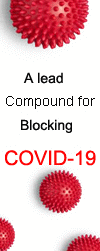
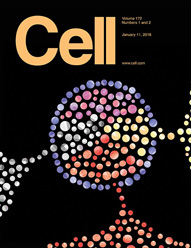 Cell. 2018 Jan 11;172(1-2):249-261.e12. doi: 10.1016/j.cell.2017.12.019.IF=36.216(2019)
Cell. 2018 Jan 11;172(1-2):249-261.e12. doi: 10.1016/j.cell.2017.12.019.IF=36.216(2019)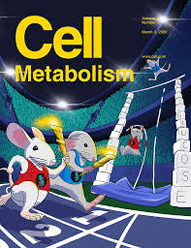 Cell Metab. 2020 Mar 3;31(3):534-548.e5. doi: 10.1016/j.cmet.2020.01.002.IF=22.415(2019)
Cell Metab. 2020 Mar 3;31(3):534-548.e5. doi: 10.1016/j.cmet.2020.01.002.IF=22.415(2019)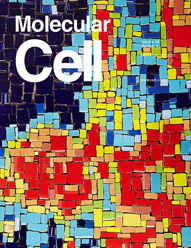 Mol Cell. 2017 Nov 16;68(4):673-685.e6. doi: 10.1016/j.molcel.2017.10.022.IF=14.548(2019)
Mol Cell. 2017 Nov 16;68(4):673-685.e6. doi: 10.1016/j.molcel.2017.10.022.IF=14.548(2019)